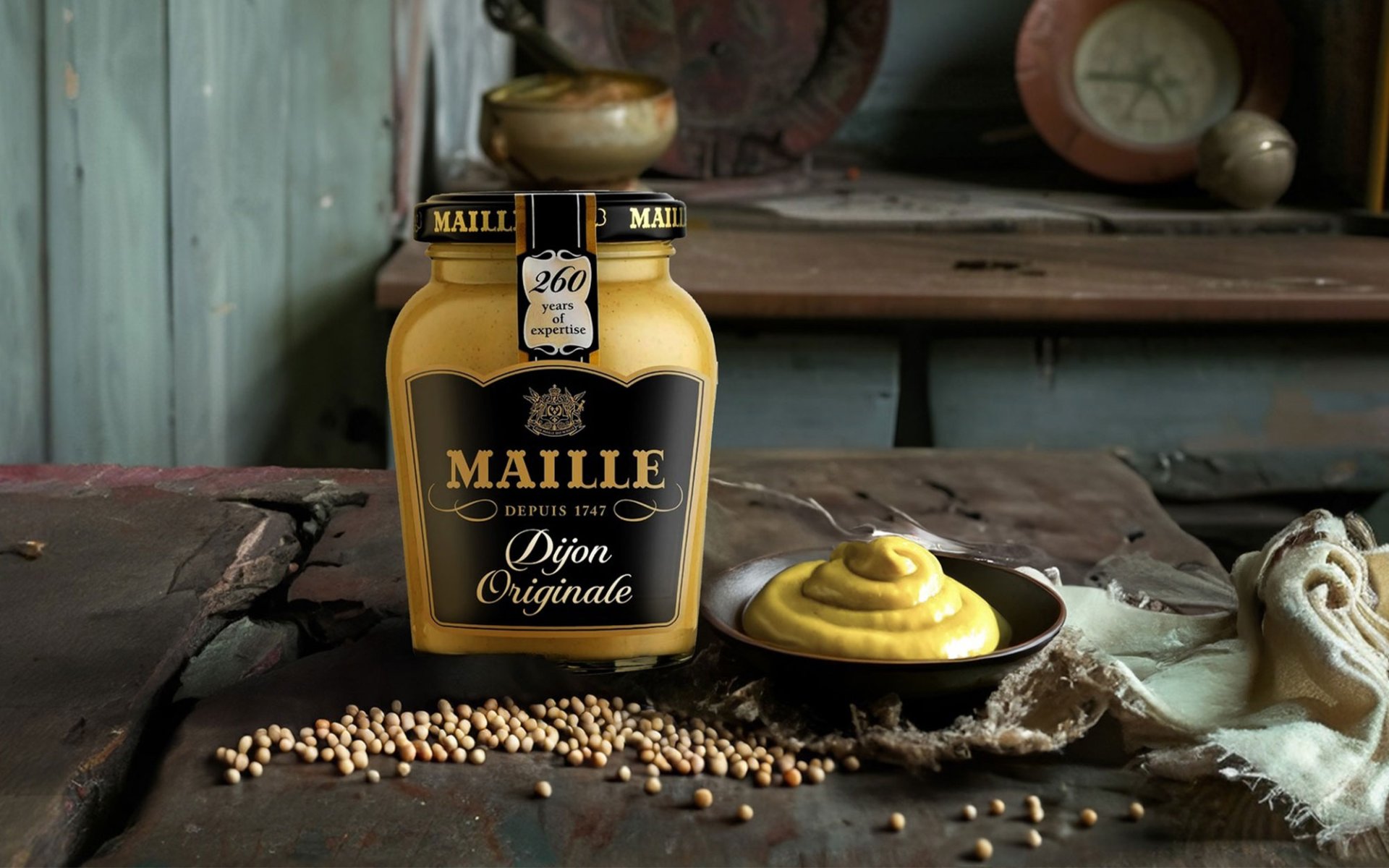Dijon Mustard

Mustard is one of the world's oldest condiments, serving as both food and medicine. It's believed to have originated in ancient Egypt, made from seeds of plants related to cabbage and white mustard. Once the seeds pods matured, the seeds were collected to create a condiment by grinding them and mixing with water, vinegar, or wine. Today, Rimping Supermarket invites you to delve into the story of Dijon Mustard, a distinctive mustard from France.
Mustard : From Ancient Medicine to Condiment (Greek-Roman Civilizations)
According to The Spruce Eats, the Romans adopted mustard from the Greeks to use as a condiment and medicine. They often chewed mustard seeds to relieve toothaches and applied mustard to treat insect bites. Furthermore, Hippocrates, the father of Greek medicine, even used mustard to treat lung diseases and rheumatoid arthritis.
The Origin of Dijon Mustard in Dijon (13th - 18th Century)
Although mustard has been used since ancient civilizations, the story of Dijon mustard is said to have originated in the 13th century in the city of Dijon, the capital of the Burgundy region in France.
Dijon has a climate conducive to mustard cultivation, making it a hub for mustard production. Legend has it that Dijon mustard first appeared on royal tables in 1336. It's said that King Philip VI of France greatly enjoyed a dish seasoned with Dijon mustard, and subsequently ordered the citizens to increase its production.
However, the Dijon mustard favored by King Philip was not in the form we know today. The original recipe was made from black mustard seeds mixed with vinegar, a traditional formula used by the general populace to produce mustard. But the version of Dijon mustard we recognize today was developed in the 18th century by Jean Naigeon, a resident of Dijon.
Finding the traditional mustard too sour and lacking balance, Jean experimented with new mustard forms until he perfected a recipe. He used brown mustard seeds (Brassica juncea) ground and mixed with Verjuice (unripe grape juice), which is less acidic than vinegar. This resulted in a mustard with a pale yellow color, a milder taste, and a less pungent aroma. Consequently, Dijon mustard became immensely popular.
Widespread Adoption and Current Status (Renaissance - Present)
Over time, during the Renaissance, Dijon mustard gained further popularity, supported by French nobility. By the 17th century, the city of Dijon was granted the exclusive right to produce mustard in France, which solidified Dijon mustard's unique identity.
In the 19th century, Dijon mustard became a symbol of French culinary art, favored by many chefs. It was commonly used as an ingredient in French dishes such as Coq au vin, Steak au poivre, Vinaigrettes, and Béarnaise sauce.
While Dijon mustard is deeply rooted in French culinary tradition, over time its influence has spread far beyond its borders, becoming a popular ingredient in cuisines worldwide. Its complex flavor enhances a wide range of dishes, from roasted meats to seafood.
However, today, Dijon is not exclusively used to refer to mustard from the city of Dijon, as it can be produced anywhere. Therefore, the name Dijon mustard now refers to a type of creamy mustard that is pale yellow, pungent, and has a sour-salty taste, made from brown mustard seeds mixed with white wine, salt, and sugar.


